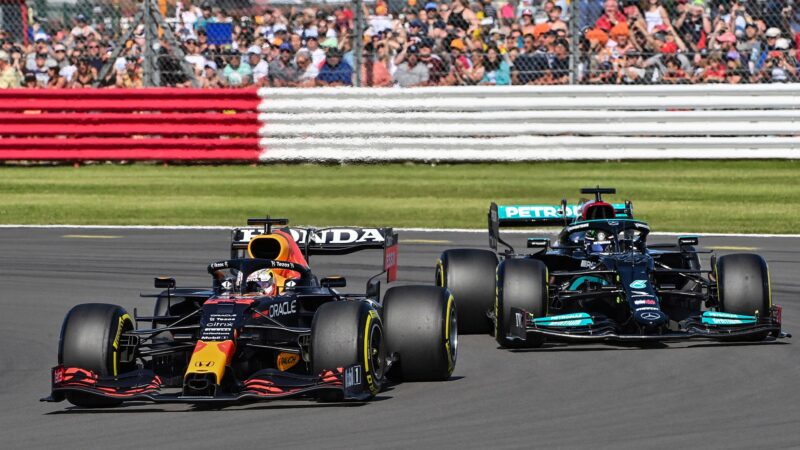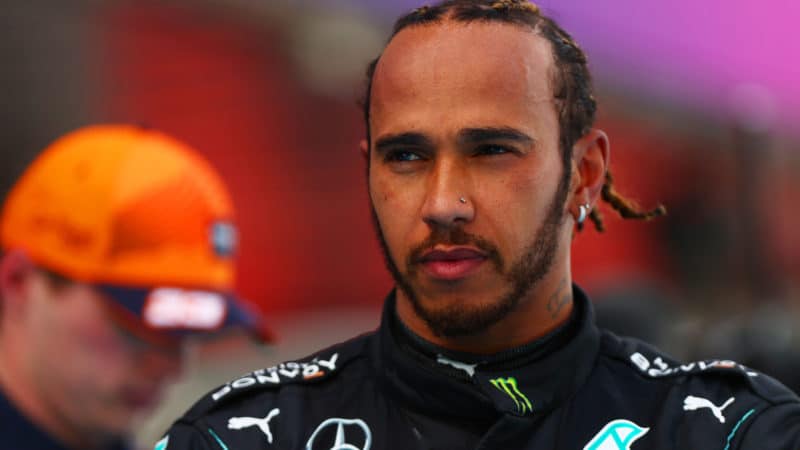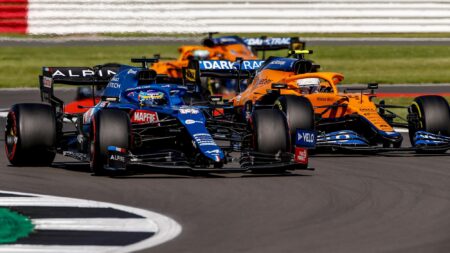In the much hotter conditions of FP1 at 46C it was way quicker. In the first runs of Q1 at 41C it was 0.4sec quicker (Hamilton did a second run to then equal Verstappen’s single early time). In the first runs of Q2, with the track temp falling to 39C the Red Bull was only 0.1sec faster. By the second runs, with the track at 37C, the Mercedes was for the first time faster – by 0.2sec – and that pattern was repeated into Q3. Red Bull had set the car up with a view to protecting the front tyres from blistering and this had perhaps contributed to its sensitivity to lower track temperatures.
For the Saturday Sprint race the track was a scorching 49C and once Verstappen had beaten a wheel-spinning Hamilton off the line, then defended hard down Wellington Straight and into Copse, he was up and away. Hamilton had no answer. Race day would be similarly hot.
A couple of details
Hamilton was cursing himself for having tried to line up his Sprint race pass into Copse on the outside. He should have tried the inside, he felt.
Mercedes had noted on the GPS traces that the Honda ERS-K was cutting through Woodcote. Not because there was anything wrong with it. It’s likely just a power unit setting used to protect the rear tyres. So that was where Verstappen was always going to be vulnerable on the first lap – and Hamilton knew that. That detail played its part in what happened at Copse on Sunday.

Hamilton lost out in the sprint race — and changed tactics for the GP
Xavi Bonilla/DPPI
Leclerc
Leclerc qualified the Ferrari a brilliant fourth, held that position in The Sprint, keeping Bottas’s Merc in sight throughout, out-manoeuvred Bottas on the first lap of the grand prix, pounced upon the lead in the wake of the Verstappen/Hamilton collision, then led Hamilton for 27 laps in the first stint.
How did he do that in a Ferrari? He performed fantastically well but also Mercedes was not trying to threaten his position throughout that first stint. Knowing that Hamilton had that 10s penalty to take at the pit stop, it needed Hamilton to maximise the gap behind him before stopping so as to minimise how many places he’d lose. That first stint was only about running as long as possible to do that and maximising his tyre grip post-stop. Racing Leclerc could wait until then. There were 12 laps to go when Bottas pulled aside to promote Hamilton into second and Leclerc was 8.7sec ahead. So as Hamilton began lapping flat-out and Leclerc did the same in response, we saw the actual difference between the two cars – and it was the thick-end of 1sec different.
Leclerc was gutted but really shouldn’t have been. It was an impossible dream anyway.
Regardless of Leclerc’s starring cameo, this race was all about what has long been inevitable: the irresistible force and the immovable object.



